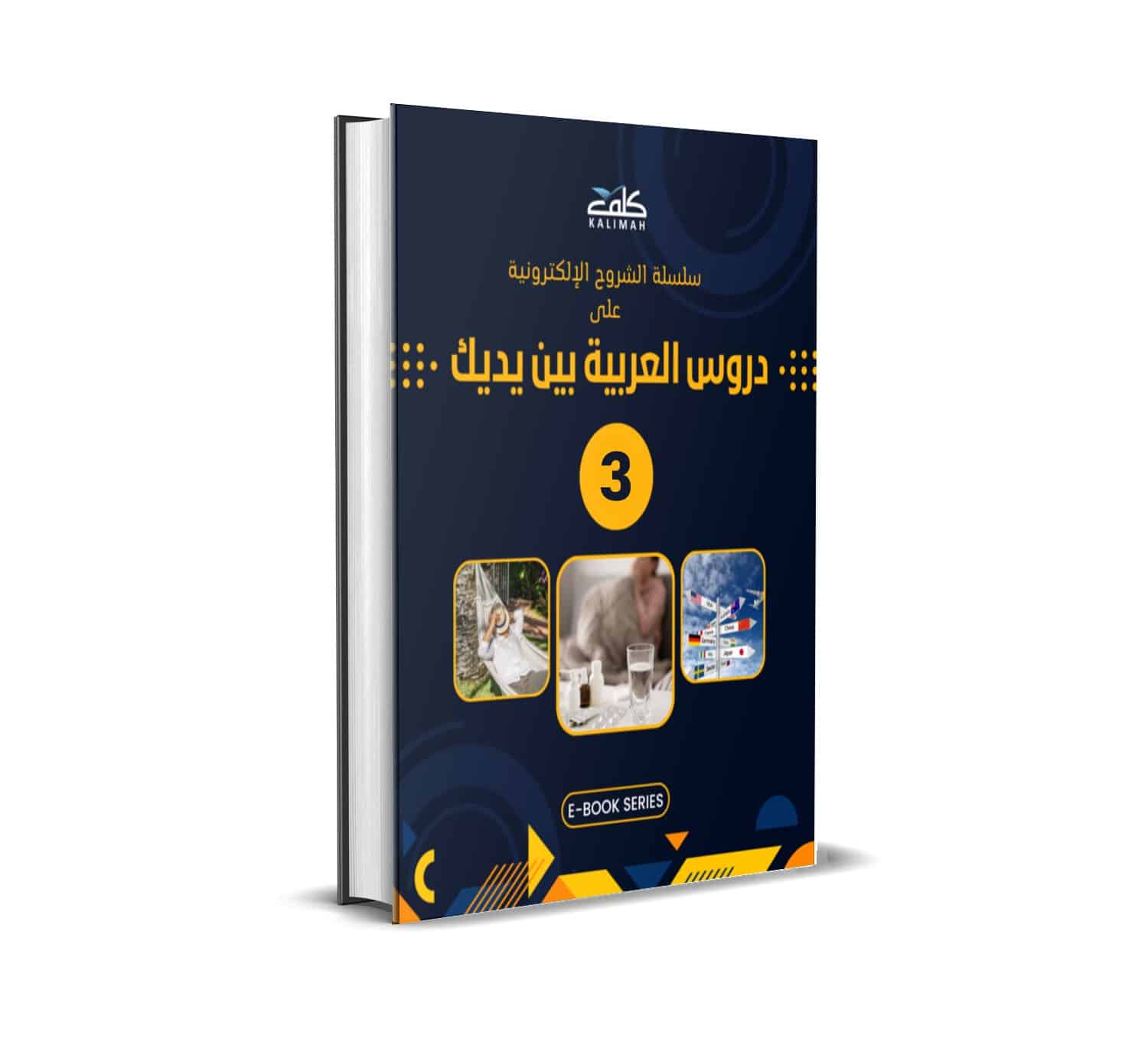Hamza is an Arabic letter. It’s one of the most unique letters in the Arabic language. This letter is very amazing as it has many different shapes. As the letter is unique, we will see many different rules for this letter. To know those fantastic rules, let’s start the journey of the Hamza.
Hamza definition in Arabic.
Hamza (ء) is a letter in the Arabic alphabet, which represents the glottal stop. Hamza sounds like the letter A, but it’s not a vowel. This letter is derived from the shape of the Arabic letter Ayn (ع). Hamza is not one of the 28 “full” letters. However, some scholars consider it the 29th or last letter of the Arabic alphabet.
Different forms of Hamza
We have different forms of Hamza(ء). So, we have an initial Hamza, and you can see it as follows (أ). We also have a medial Hamza (أ)
(ـئـ) (ـؤ) (ء). Moreover, we have a final Hamza, (أ) (ء) (ـؤ) (ئ). In the next part, we will discuss every form in detail.
Initial Hamza:
Hamza(ء) can have Fattah, Dammah or Kasrah. If it has Fattah or Dammah, Hamza will be placed above alif. For example, أَكَلَ and أُشَاهد. If it has Kasrah, it will be placed under alif. For example, إِسْلام . Initial Hamza always be on alif, you can’t see it on the line, or on a وwaw or dotless yaa ى.
Another type of Hamza we write at the beginning of the word we called it Hamzat wasl / هَمزَة الوَصْل. Hamzat al-wasl is an extra Hamzah at the beginning of a word, which is pronounced when we start the word, and it is dropped when joining the word that has Hamzat al-wasl with the previous word. It acts as a stepping stone to the next word. For example, الْحمد لله Alhamdulillah, when starting with it I will pronounce the Hamza, but when joining in قل الْحمد لله Qulilhamdulillah, I will not pronounce it.
Medial Hamza:
If the letter before Hamza has Fattah (-َ), the Hamza will be placed on alif. For example, رَأس.
If the letter before it has Kasrah (-ِ), the Hamza will be placed on a line (ـئـ). For example, دَافِئة.
If the letter before it has Dammah, the Hamza will be placed on و waw (ـؤ ). For example, فُؤاد.
If the letter before it has Sukoon, the Hamza will be written on the line alone (ء). For example, تَوْءم.
If the Hamza is in the middle and has a Fattah letter before Hamza has Maad alif, the Hamza will be written on the line alone (ء). For example, ساءَل- تساءَل- عباءَة.
Final Hamza:
If the letter before Hamza has Fattah, the Hamza will be placed on alif. For example, بَدَأ.
If the letter before it has Dammah, the Hamza will be placed on و waw (ـؤ ). For example, تَباطُؤ.
If the letter before it has Kasrah, the Hamza will be placed onى (ئ). For example, قَارئ.
If the letter before it has Sukoon or a long vowel (و,ا, or ي), the hamza will be written on the line (ء). For example, جَاء or مِلْء.
Hamza with different letters
We can see Hamza with different letters:
Hamza with alif(أ):
We can see Hamza with Alif in different situations such as when Hamza comes at the beginning of the word. For example, أُشاهد. We also see it with alif when it comes at the middle and end of the word, and the letter before it has Fattah. For example, كَأس and يَقَرَأ.
Hamza with wow ؤ:
We can see Hamza with the letter wow in different situations such as when Hamza comes at the middle and end of the word and the letter before it has Dammah. For example, مُؤلم and يجرُؤْ.
Hamza with ya ئ:
We can see Hamza with the letter wow in different situations such as when Hamza comes at the end of the word, and the letter before it has Kasrah. For example, قَارِئ.
Hamza and Tanwīn
If the Hamza comes at the end of the word and this word has Tanwīn Damma or Kasrah, we put Tanwīn above the Hamza for Tanwīn Dammah or under it if it is Kasarah. For example:
| جزءٍ | جزءٌ |
| عبءٍ | عبءٌ |
| أسماءٍ | أسماءٌ |
| تبوُّءٍ | تبوُّءٌ |
For Tanwīn Fataah, we have three ways:
- If the Hamza is preceded by an Alif, we do not write an alif after it, and we put the Tanwīn above the Hamza. For example, أسماءً.
- If the final independent Hamza is preceded by a non-connecting letter, put Tanwīn on the Hamza and write an independent alif after جزءًا – تبوُّءًا
- If the final independent Hamza is preceded by a connecting letter, put Tanwīn on the Hamza on the tooth and follow with a connecting alif: عبئـًـا
Hamza without kursi
Hamza without kursi (chair) means that the Hamza will be alone on the line. We can see that in many situations. For example, if the Hamza is in the middle and the letter before Hamza has Sukoon, the Hamza will be written on the line alone (ء). For example, تَوْءم.
If the Hamza is in the middle and has a Fattah letter before Hamza has Maad alif, the Hamza will be written on the line alone (ء). For example, ساءَل- تساءَل- عباءَة.
If the hamza in the end and the letter before it has Sukoon or a long vowel (و,ا, ي), the hamza will be written on the line (ء). For example, جَاء or مِلْء.
How to Pronounce Letter Hamza
The letter hamza is defined as a glottal stop. The letter Hamza comes from the bottom of the throat from the vocals. Letter Hamza is produced by closing the vocal cords and then opening them. When you pronounce it, try to make the sound of this letter soft.
The difference between Hamza and Alif
Alif is a vowel letter, it has the sound of a long “A”. For example, the word كتاب (ketaab) is written with an alif by itself. It represents the long vowel “a”. So, The sound of Alif comes from an empty part of the mouth and the throat. However, Hamza is a consonant letter that represents a glottal stop. It is produced by closing the vocal cords and then opening them. We can write it with or without an alif. You can see it with أ (alif), و (waw), and ي (ya). The Hamza occurs at the beginning, in the middle, and at the end of words, while the alif madd occurs in the middle or at the end of words.
You can see Hrakah (Fattah, Dammah, or Kashrah) on Hamaza, but you can’t see it on Alif.
🌟 Unlock Your Potential in Arabic with Kalimah Center! 🌟
Ready to deepen your connection with the Quran and enhance your understanding of Arabic? Join Kalimah Center today and embark on a transformative journey of learning and growth! Our professional, handpicked Online Arabic and Quran Tutors are dedicated to helping you master these essential skills with ease and expertise.
📚 Explore Our Courses:
Online Arabic Course: Tailored to your level, our comprehensive Arabic program includes 16 teaching levels and 400+ hours of personalized sessions.
Online Arabic Course For Kids: Nurture your child’s love for Arabic with our engaging and structured program, available in 24 levels for primary, intermediate, and secondary stages.
💡 Why Choose Kalimah?
Expert Tutors: Learn from native Arabic speakers and Ijazah-certified teachers who prioritize your progress.
Flexible Learning: Enjoy one-on-one classes, 24/7 access to materials, and interactive exercises for a dynamic learning experience.
Comfortable Environment: Benefit from a supportive and encouraging atmosphere, where mistakes are seen as opportunities for growth.
Proven Success: With over 8,000 students worldwide and glowing testimonials, Kalimah Center is your trusted partner in Arabic and Quran education.
🚀 Start Your Free Trial Today! 🚀
Don’t miss out on this life-changing opportunity to deepen your faith and knowledge. Sign up now for your free trial and take the first step towards becoming a better practicing Muslim with Kalimah Center!
FAQs about Hamza in Arabic
How to use ء?
You can write Hamza at the beginning, middle, or end of the word.
You can see it with أ (alif), و (waw), and ي (ya).
What are the two types of Hamza in Arabic?
There are two types of hamza in Arabic. They are Hamzat al qata / هَمزَة القطع. and Hamzat al-wasl/ هَمزَة الوَصْل.. Hamzat al qata is represented by the following symbol ( ء ) over or below it, while Hamzatul wasl is not accompanied by Hamza. Hamzat al qata is always pronounced whether it is preceded by some word or letter.
Other type of Hamza is Hamzat wasl / هَمزَة الوَصْل. Hamzat al-wasl is an extra Hamzah at the beginning of a word, which is pronounced when we start the word, and it is dropped when joining the word that has Hamzat al-wasl with the previous word. It acts as a stepping stone to the next word. For example, الْحمد لله Alhamdulillah, when starting with it I will pronounce the Hamza, but when joining in قل الْحمد لله Qulilhamdulillah, I will not pronounce it.
How do you write Hamza on an Arabic keyboard?
First, install an Arabic language-specific keyboard layout. If you have an Arabic keyboard, you will find it printed on the keyboard. If you have an English keyboard, we will find ء)) on letter (x),((ئ on the letter(z), and (ؤ) on the letter (c). Please take care, it may differ from one keyboard to another.
Is Hamza a throat letter?
Yes, Hamza in Arabic is a throat letter in Arabic. It is pronounced as a glottal stop. It is produced by closing the vocal cords and then opening them.














